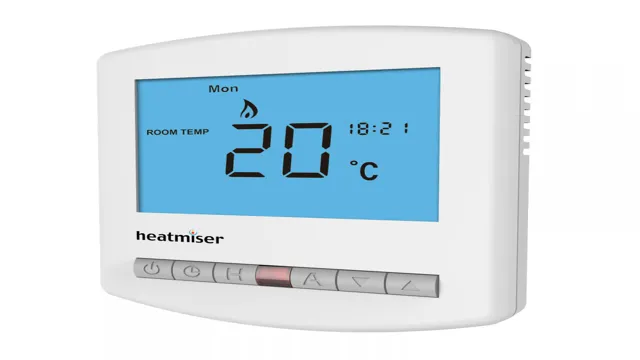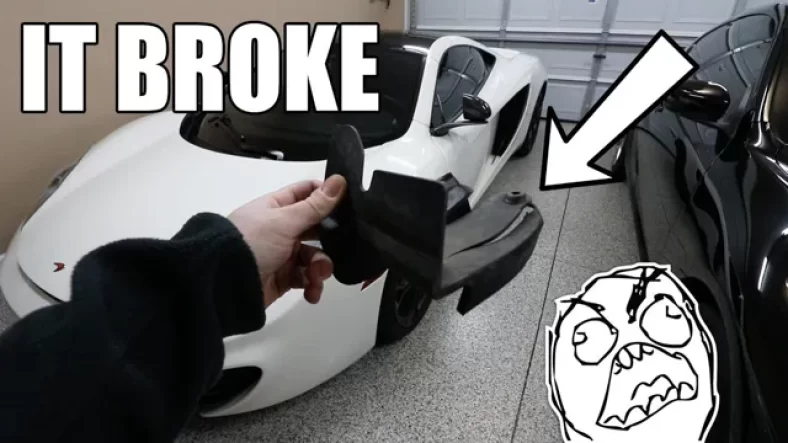As homeowners, we all want to ensure that our homes are equipped with reliable and efficient thermostats that provide us with the ideal level of comfort all year round. However, just like any other electrical equipment, thermostats can also malfunction or break down unexpectedly. This is where a thermostat warranty comes into play, providing you with an added layer of protection and peace of mind.
But what exactly is a thermostat warranty, and what should you know before investing in one? In this blog post, we will delve into everything you need to know about thermostat warranties, helping you make an informed decision for your home.
Coverage
If you’ve recently purchased a thermostat and are wondering if it’s covered under warranty, the answer is likely yes. Most thermostats come with a manufacturer’s warranty that covers defects in materials and workmanship for a certain period of time, usually anywhere from one to five years. This means that if your thermostat stops working properly or breaks down completely within that time frame, you may be able to get it repaired or replaced for free.
However, it’s important to read the terms of the warranty carefully to make sure you understand what’s covered and what’s not. Some warranties may only cover certain parts or components, while others may have limitations on when and how you can make a claim. It’s also worth noting that warranties typically do not cover damage caused by misuse, neglect, or other forms of user error.
If you have any questions or concerns about your thermostat’s warranty coverage, be sure to contact the manufacturer or seller for more information.
Yes, Most Thermostats are Covered Under Warranty
If you’re worried about having to pay for a replacement thermostat if it malfunctions, don’t be. Most thermostats are typically covered under warranty, giving you peace of mind knowing you won’t have to shell out extra cash for an issue that isn’t your fault. In fact, most manufacturers offer a one to three year warranty on their products, so you can rest assured that you’re covered if anything goes wrong.
However, it’s important to read the warranty carefully and understand what is and isn’t covered before making a claim. Some warranties may not cover damage caused by accidental drops or water damage, for example, so it’s always a good idea to take extra precautions to protect your thermostat. But overall, if your thermostat is under warranty, you should be covered for any defects or malfunctions that occur.
So if you notice any issues with your thermostat, be sure to check the warranty and make a claim if necessary to ensure you’re not left out of pocket.

Check Your Manufacturer’s Policy for Details
When it comes to warranty coverage, it’s essential to check your manufacturer’s policy for exact details. Each company has different terms and conditions for what is covered and what is not. It’s important to read the fine print to understand what you can expect from your warranty and what conditions may void your coverage.
For example, some warranties may not cover damage caused by natural disasters or accidents, while others may require you to use authorized repair centers. In addition, some manufacturers may offer extended warranties for an additional cost. By taking the time to review your manufacturer’s policy, you can ensure you are informed about your coverage and make the best decisions for your product’s care.
What’s Included
If you’re wondering if your thermostat is covered under warranty, the answer is it depends on the brand and specific model you have. Most manufacturers offer warranties on their thermostats, but the length and coverage can vary. Some warranties may only cover defects in workmanship or materials, while others may include parts and labor.
It’s important to read the warranty information provided by the manufacturer to understand what’s included and any limitations. Keep in mind that warranties typically only cover normal use and not damage caused by improper installation or use. So, if your thermostat stops working and it’s still under warranty, contact the manufacturer for instructions on how to get it repaired or replaced.
Typical Coverage Includes Parts and Labor
When shopping for a new appliance, it’s important to consider the warranty coverage that comes with it. The typical coverage on most appliances includes parts and labor, meaning that any repairs needed during the warranty period will be covered free of charge. This provides peace of mind to the consumer in case anything goes wrong with the appliance.
It’s important to read the fine print of the warranty to ensure that you understand what is covered and for how long. Some warranties may also offer additional perks, such as extended coverage or replacement of the appliance if it is unable to be repaired. It’s always a good idea to inquire about the warranty coverage before making a purchase to ensure that you are making an informed decision.
May Vary Depending on Manufacturer and Model
When it comes to purchasing a new device, it is essential to understand what is included in the package. However, it’s not always as simple as it seems, as the contents may vary depending on the manufacturer and model you have chosen. For example, some devices may come with additional accessories such as a case, screen protector, or headphones, while others may not include these extras.
In some cases, you may need to purchase additional accessories separately, while others come as a bundle. It is important to read the product description carefully to understand what is and what is not included in the package so that you can make an informed decision. It can be frustrating to find out that your newly purchased device does not include an essential accessory that you assumed would come with it.
This is why manufacturers usually provide a list of what is included in the product description, so it helps to carefully read through it before making a purchase. Moreover, some manufacturers may offer the option to customize the contents of the package based on your preferences. It is important to note that, in some cases, additional accessories may require a separate purchase.
In conclusion, understanding what is included in the package is crucial when purchasing a new device. Whether you are buying a smartphone, tablet, or laptop, the contents of the package may vary depending on the manufacturer and model. By reading the product description carefully, you can ensure that you have everything you need from the start, without having to make additional purchases.
Remember to also consider the option of customizing the contents of the package, so you get exactly what you need.
Exclusions
If you’re wondering if a thermostat is covered under warranty, it’s important to first check the specific terms and conditions of your warranty. While some warranties may cover thermostats, others may have exclusions or limitations. For example, if the thermostat is damaged due to improper installation or use, it may not be covered under warranty.
It’s also possible that certain types of thermostats may not be eligible for warranty coverage, so it’s important to check with the manufacturer or retailer about your specific product. Overall, it’s always a good idea to familiarize yourself with the details of your warranty to avoid any surprises down the line.
Damage Resulting from Installation or Misuse Not Covered
When it comes to getting a new installation or product, it’s important to always use it in the intended way. Any misuse or damage caused by incorrect installation or use is unfortunately not covered under most warranties. This is why it’s crucial to read the installation instructions carefully and not skip any important steps.
Additionally, make sure to follow any user guidelines to ensure prolonged and efficient use of your new product. It’s easy to get excited and dive right into using our new gadgets or appliances, but taking the time to understand proper usage can save you a lot of frustration and money in the long run. So, remember to always read the instructions and use your new products as intended to avoid any potential issues.
Normal Wear and Tear May Not Be Covered
If you’re relying on your home warranty to cover every repair or replacement, it’s important to be aware of any exclusions in your policy. One common exclusion is for normal wear and tear. While home warranties typically cover sudden breakdowns and malfunctions, they often won’t cover items that have simply worn out over time.
This can include things like carpeting, paint, and appliances that have been used regularly for years. It’s important to understand what is and isn’t covered by your warranty, so you can plan accordingly for any necessary repairs or replacements. It may also be worth considering additional coverage or maintenance plans for items that aren’t covered under your warranty.
Submitting a Claim
If your thermostat has malfunctioned or stopped working altogether, you may be wondering if it’s covered under warranty. The answer to this question may depend on the type of warranty your thermostat came with. Many thermostats come with a manufacturer’s warranty that covers defects and malfunctions for a certain period of time.
However, this warranty may not cover damage caused by misuse, accidents, or improper installation. If you believe that your thermostat is covered under warranty, you may need to submit a claim to the manufacturer or contact the retailer where you purchased the thermostat. It’s important to read the warranty information carefully and follow the proper procedures for submitting a claim to ensure that you receive the coverage you’re entitled to.
So, if you’re wondering if a thermostat is covered under warranty, the answer is that it depends on the specific warranty and the circumstances surrounding your claim.
Contact Manufacturer or Installer to Start Process
If you need to submit a claim for your product, the first step is to contact the manufacturer or installer. This might seem like a daunting task, but it’s important to note that they want to help you. Often, the contact information will be readily available on the product packaging or on their website.
A quick phone call or email can set the process in motion. In some cases, the manufacturer may require proof of purchase or photographs of the issue. It’s also a good idea to be prepared with a detailed description of the problem and any troubleshooting steps you’ve already taken.
Remember, the manufacturer is invested in providing quality products and ensuring customer satisfaction, so don’t hesitate to reach out if you’re experiencing an issue.
Conclusion
Well, it all depends on the fine print. Some warranties may cover thermostats, while others may not. But let’s not forget that even if your thermostat isn’t covered, a chilly home is no laughing matter.
So, if you find yourself in a heating pickle, it may be time to turn up the heat on your warranty search!”
FAQs
Is a thermostat covered under warranty?
It depends on the specific warranty of your thermostat. You should refer to the manufacturer’s warranty policy or contact their customer support for more information.
How long is the warranty period for a thermostat?
The warranty period for a thermostat varies depending on the manufacturer and model. Generally, it ranges from 1 to 5 years. It’s best to check with the manufacturer for the specific warranty details.
What is typically covered under a thermostat warranty?
A thermostat warranty typically covers defects in materials and workmanship. It may also cover damages caused by normal use. However, it’s important to read the manufacturer’s warranty policy for details on what is covered.
What voids a thermostat’s warranty?
Using the thermostat for purposes other than what it was intended for, attempting to repair or modify the device, or neglecting regular maintenance may void the warranty. It’s important to read the manufacturer’s warranty policy for specific details on what voids the warranty.


